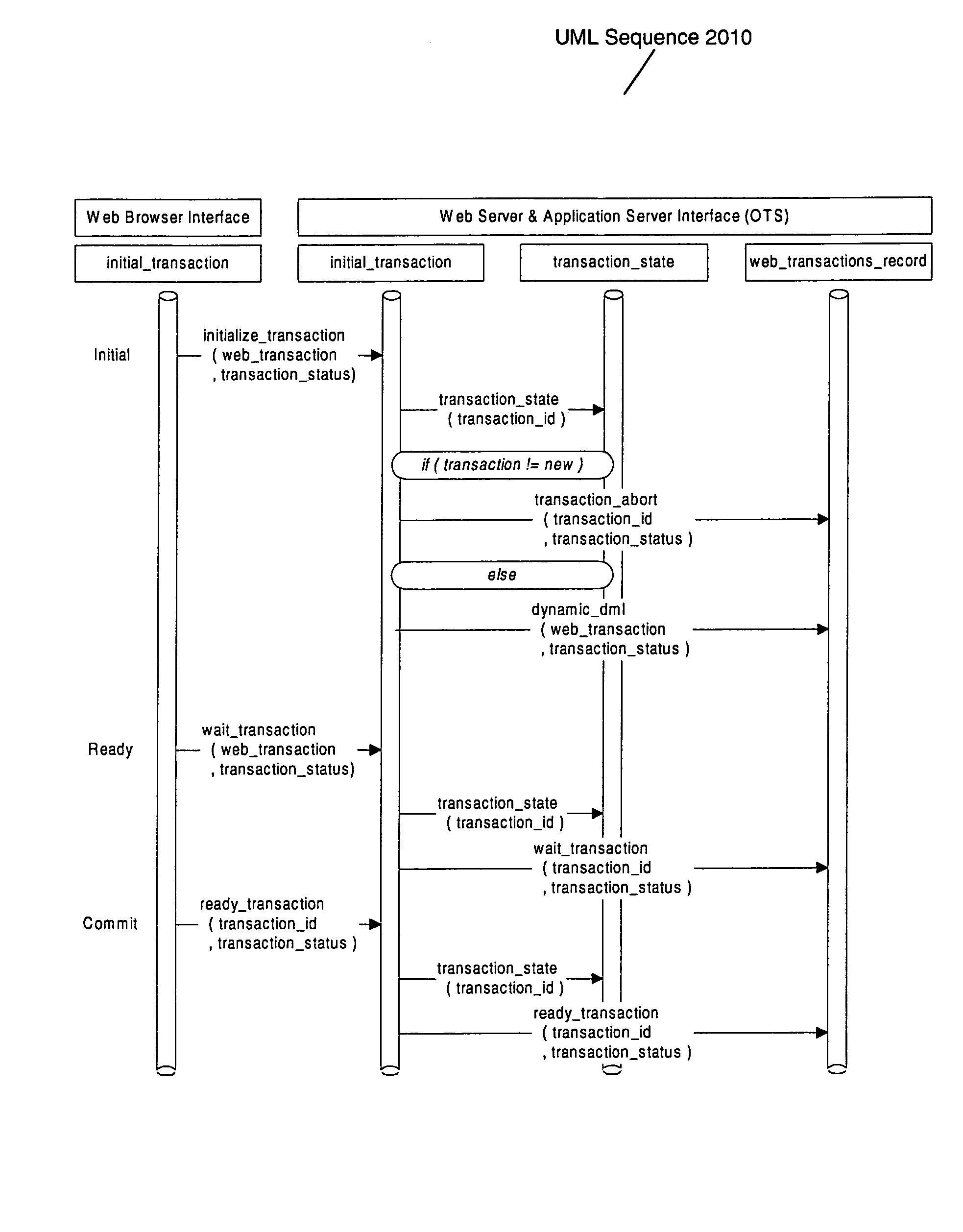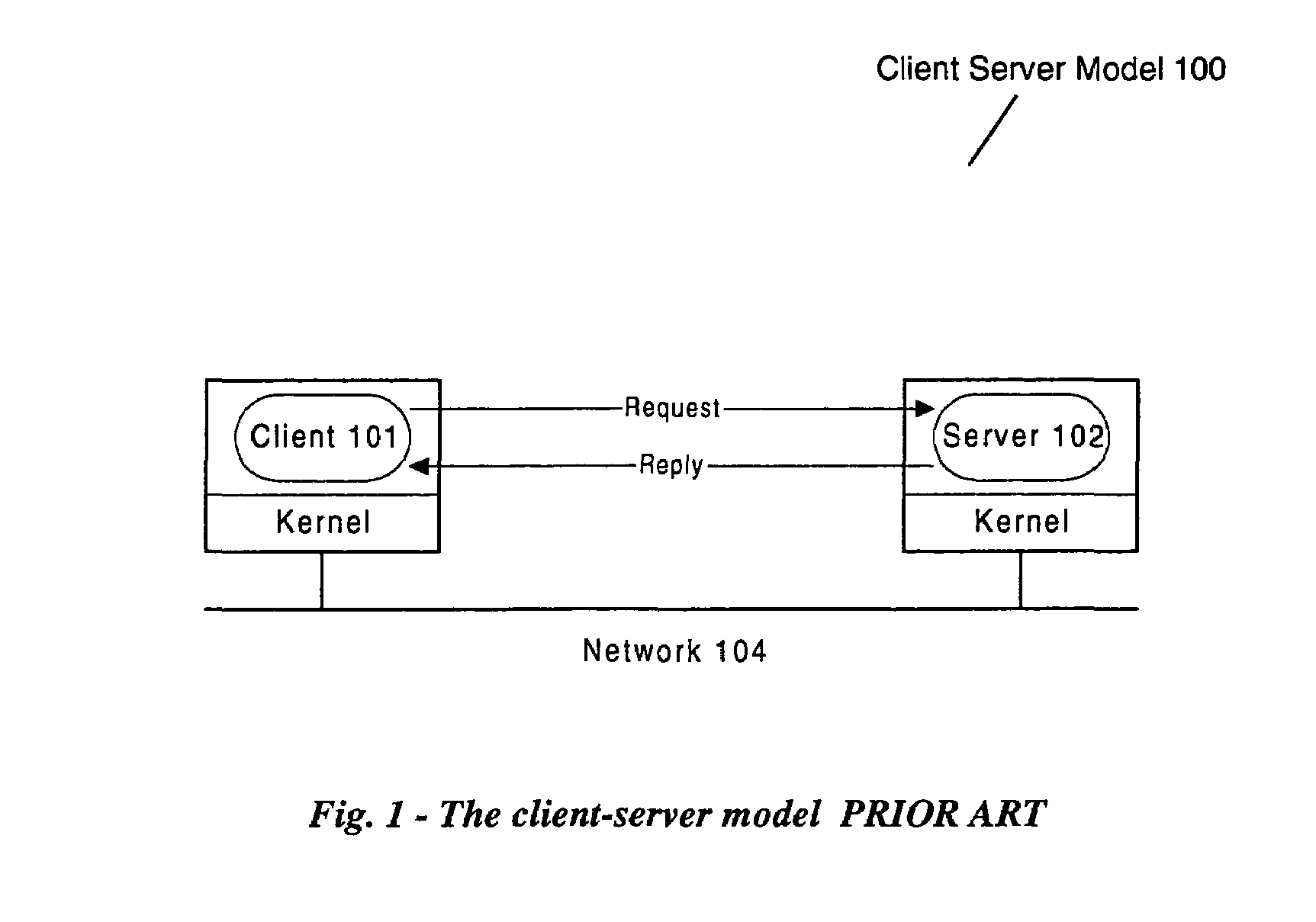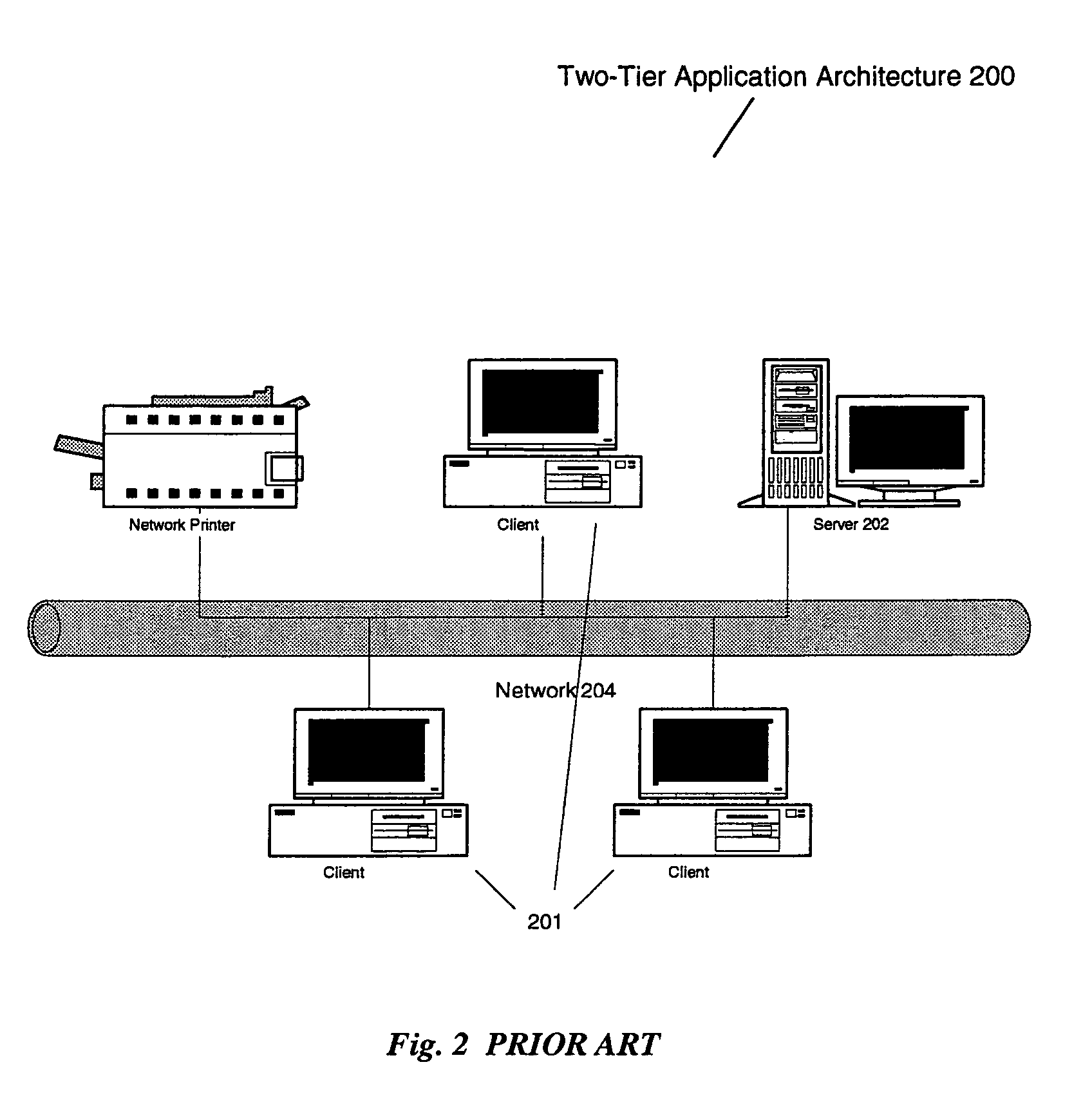Likewise, there are numerous design issues linked to implementing
client-
server architectures.
However, two-tier computing can impose severe limits on the
server's computational resources when both the application and the
file system or
database are co-located.
However, if something goes wrong during the transaction, then the contract arbitrates the dispute or nullifies itself.
The all or nothing characteristic of flat transactions poses a major
processing restriction because there is no way to
commit or abort parts of a flat transaction.
Long-lived transactions are transactions that require simultaneous update of many object states and cannot maintain ACID properties in any of the other transaction models described.
Second, a complex compound transaction is a distributed transaction across multiple systems (e.g., where individual systems may be single or
distributed servers) that are administered by more than one administrative authority.
Further, the compound multilevel transaction weakens the likelihood of ACID compliant isolation because the containment transaction is now more likely to experience an abnormal termination of the RPC connection between the remote controller
transaction service (RC) and the discrete top-level (TL) transactions of participating heterogeneous systems.
Thus a compound multilevel
transaction type may not guarantee an ACID compliant transaction across a heterogeneous environment because the containment transaction architecture cannot adequately vouchsafe the ACID
atomicity and isolation properties of a compound multilevel transaction using conventional techniques.
Unfortunately, though transaction types apply in both homogeneous and heterogeneous environments, the TP monitor depicted FIG. 7 does not apply in heterogeneous environments.
Unfortunately, there are four unresolved issues with the CORBA 2.0 ORB specification that must be resolved before an IIOP backbone ORB can enable Internet e-commerce through loosely coupled and federated ORBs.
Specifically, CORBA 2.0 ORB specification fails to deliver TP monitor component equivalent functionality for
queue management, server class management, request scheduling and load balancing.
However, the last
unresolved issue, number four, is the same as that noted above with traditional TP monitors that fail to vouchsafe transaction integrity for a complex compound transaction.
TP monitors do not work in a heterogeneous environment because of two related issues.
Second, the application and program services are administered by more than one administrative authority and their
recovery processes are outside of the TP monitor's span of control [14].
However, e-commerce is limited in the current web-enabled model of a single client and server because e-commerce requires more than ACID compliant transactions.
First, the purchaser and seller do not want the nature, content and price of the purchase disclosed.
Second, the purchaser does not want the
purchasing instrument's (e.g.,
credit card account)
authorization process and code compromised by parties that are external to the e-commerce transaction.
Netscape's Secure Socket Layer (SSL) provides transaction
encryption on browser submitted transactions; however, web spoofing can compromise the integrity of an SSL encrypted transactions as demonstrated by the Safe Internet
Programming team at Princeton University [29] [30].
Unfortunately, these security attributes are inadequate because the remote objects or
Common Gateway Interface (CGI) programs executed in a CORBA HOP ORB that make e-commerce possible
pose risks to web servers.
Some CGI program risks are that they may: (1) Read, replace, modify or remove files; (2) Mail files back over
the Internet; (3) Execute programs downloaded on the server such as a
password sniffer or a network
daemon that provides unauthorized
telnet access; and (4) Launch a denial-of-service
attack by overloading the server CPU [31].
Other vulnerable areas for web servers are the
database and buffer overflows that require two additional levels of
security awareness to protect the integrity and privacy of e-commerce transactions.
When e-commerce is removed from the single client and server paradigm and complex compound transactions between a single client and multiple heterogeneous servers are added to the transaction scope, the potential problems extend beyond traditional security attributes of e-commerce transactions.
Current e-commerce transactions do not provide a standard for a complex compound transaction as described in this paper.
The CORBA Object
Transaction Service (OTS) fails to provide a reliable
online transaction processing (OLTP) middle-tier to dynamically bound heterogeneous, discretely administered and loosely coupled systems because it does not provide write consistent and recoverable asynchronous symmetrical replication of data [32].
The X / Open DTP
Reference Model uses a 2PC protocol that does not guarantee write consistency or transaction recoverability in a heterogeneous, discretely administered and loosely coupled
system architecture [17] [33].
Unfortunately, when a fault happens between the completion of the
remote procedure call (RPC) event on
database “B” (e.g., Step 3b) and the
receipt of RPC
acknowledgement by database “A” (e.g., Step 3c), then the two databases are in write inconsistent states.
In
Oracle's implementation of symmetrical replication, this type of failure will result in both databases becoming unavailable and forcing point-in-time symmetrical
recovery of both database servers.
Outwardly, this mechanism seems simple and direct but when the number of synchronized databases and number of transactions per second grows, so does the problem in a homogeneous environment.
However, in a CORBA Object
Transaction Service (OTS) that does not have a persistent
data store of
transaction data states (e.g., recoverable objects, recoverable object references, and transaction regeneration after failures), the possibility of heterogeneous
recovery is non-existent [32] [18].
The problem, however, is that the CORBA Object
Transaction Service specification excludes methods to make persistent the recoverable state of an Object Transaction Service's recoverable objects, to recover object-references, and regenerate transactions after failure [32].
Unfortunately, the persistent state of recoverable objects, recoverable object-references and transaction regeneration after failure issues are the same as those illustrated above in
Oracle's implementation of the X / Open DTP
Reference Model.
However, there is no system component in the
Oracle implementation to automatically regenerate a recoverable object-state.
The failure to make persistent the recoverable state of an Object Transaction Service's recoverable objects, recoverable object-references and transaction regeneration after failure [32] means that the CORBA Object Transaction Service specification lacks the necessary global state attributes of a multidatabase
management system (MDBMS) to guarantee commercial OLTP across
the Internet.
Transaction overhead cost, or the frequency of object messaging, transaction recovery and rebroadcast transactions across
the Internet is a complex issue that does not have a single independent solution.
Lengthening
quantum values increase the number of transactions that
delay recovery, and the increases number resources that are held longer, increase the number recovery processes delayed, and increases the likelihood of unnecessary event messages.
 Login to View More
Login to View More  Login to View More
Login to View More 


